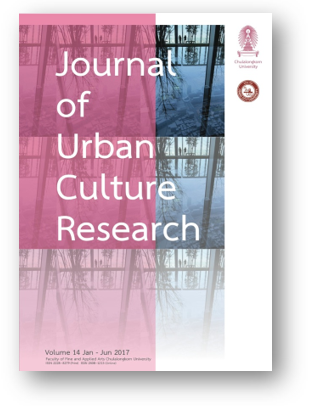Understanding the Impact of Cultural Design Aesthetics and Socioeconomic Shifts: Approaches to Urban Resilience Empowers Place-Making
DOI:
https://doi.org/10.14456/jucr.2017.3Keywords:
Vernacular, Renaissance, Urbanism, Cultural Design, Aesthetics, Urban Planning, Social MovementAbstract
The scope of study in this paper encompasses architectural and urban design approaches from three cultural systems: vernacular, Renaissance and modern urbanism. The main objective is to understand how cultural design aesthetics contribute to perspectives in visualizing and conceptualizing the construction of buildings and planning of urban settings such as residential and street layout designs in succeeding eras from pre-modern, Renaissance, Industrial Revolution, post-industrial and Postmodern centuries. A comparison of the paramount cultural design characteristics that distinguish each type of urban architectural form is undertaken. In examining the impact of social shifts and economic development on urban design planning of complex modern societies, scholarly perspectives of distinctive architectural styles of Western cultures will be critically discussed through the qualitative methodology of case studies. This examination is then framed into a comparative table in the aim of differentiating each approach. Findings from this research suggest the strategic importance of cultural design aesthetics as an emerging concept of urban design and architectural planning in order to produce resilient, adaptive communities. This is a key framework in understanding how urban design planning helps communities synchronize living habitats to shifting conditions such as climate changes, economic demands and social needs. This paper proposes for collaborative planning and decision making, as well as policymaking mechanisms centered on developing and sustaining urban resilience, while empowering stakeholders to overcome the growing scale of problems and issues that beset modern cities.
Downloads
Published
How to Cite
Issue
Section
License
Authors authorize the JUCR to publish their materials both in print and online while retaining their full individual copyright. The copyright of JUCR volumes is retained by Chulalongkorn University.
The views and opinions expressed herein are those of the individual author(s) and do not necessarily reflect the policies or opinions of the Journal (JUCR), it editors and staff, Chulalongkorn University, or Osaka Metropolitan University.








